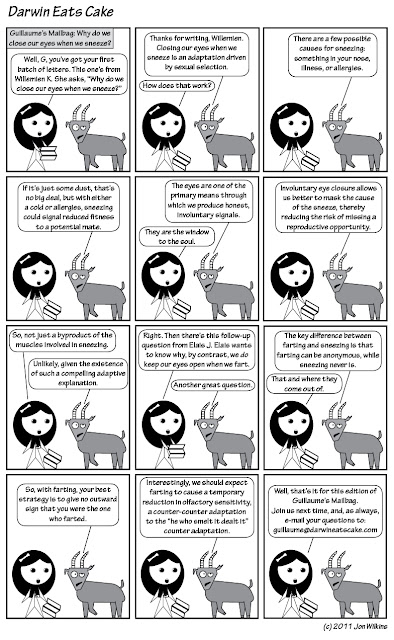So, if you’re an Evolutionary Biologist, you’re already familiar with the dust-up prompted by a Nature paper published in 2010 by Martin Nowak, Corina Tarnita, and E. O. Wilson. If not, I wrote about the paper, and the response from the community, here and here.
Briefly, the article attacked one class of approaches to modeling the evolution of traits affecting social interaction: models based on kin selection and inclusive fitness. The authors made strong claims about the effectiveness of such models, claiming that they were useless or even wrong for thinking about eusociality (e.g., in species of bees and ants). The paper prompted a number of written responses, in blogs and in letters to Nature, one co-authored by 137 prominent biologists, refuting many of the claims of the paper.
The paper comes with a weighty appendix, which contains a lot of calculations. Those calculations are not problematic. Rather, it is the main text (the only part most people will read) that triggered the vocal response. The main text made a bunch of unsupported (and wrong) claims, knocking down a straw-man caricature of kin-selection models. It was this straw-man caricature that people found so offensive, along with the failure to cite a huge body of literature (which would have undermined that straw man).
The disconnect between the careful, meticulous appendix and the swaggering, irresponsible main text led most readers to assume that we were looking at a frankenpaper, the imperfectly integrated product of multiple authors. In this sort of circumstance, the impulse is to partition blame among the authors.
My sense was that most people held Tarnita, a postdoc with Nowak at the time, blameless, a talented junior scientist in the wrong place at the wrong time.
The blame, in most people’s eyes, fell primarily on Nowak, for a complex set of reasons that I tried to untangle here. In particular, Nowak has a reputation for not being generous in attribution of credit to other scientists.
Wilson was not blamed. He is, after all, a living legend among evolutionary biologists. If anything, the discussion about Wilson was along the lines of, “Why is Wilson keeping such bad company?” Some people even speculated that he was perhaps being taken advantage of, that he had been roped into putting his name on the paper.
It now appears that I, along with all the other rumor-mongering evolutionary biologists, owe Nowak an apology.
Over the past year, Wilson has been on the warpath, giving various interviews in which he reiterates the major arguments presented in the paper. The most recent just appeared here in the Atlantic. This article, I think, makes it clear that Wilson was the ideological driving force behind all of the misrepresentation in the original Nature article. It also seems to indicate that the disingenuous argument will be expanded to book length in Wilson’s forthcoming The Social Conquest of Earth.
The richest part of the Atlantic article comes in Wilson’s trashing of Stephen Jay Gould. Trashing Gould is, of course, a popular pastime among evolutionary biologists.
“I believe Gould was a charlatan,” [Wilson] told me. “I believe that he was … seeking reputation and credibility as a scientist and writer, and he did it consistently by distorting what other scientists were saying and devising arguments based upon that distortion.”
This is a valid enough criticism of Gould. It is also a dead-on description of what was wrong with the Nowak et al. paper. I suspect that the irony is lost on Wilson.
Nowak, M., Tarnita, C., & Wilson, E. (2010). The evolution of eusociality Nature, 466 (7310), 1057-1062 DOI: 10.1038/nature09205











